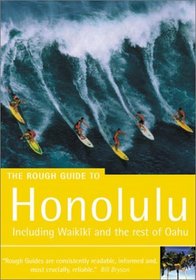Search -
The Rough Guide to Honolulu 2 (Rough Guide Mini Guides)
The Rough Guide to Honolulu 2 - Rough Guide Mini Guides
Author:
INTRODUCTION Although Oahu is only the third largest of the Hawaiian islands – its six hundred square miles are dwarfed by the four thousand square miles of the aptly-named Big Island – it’s home to almost 900,000 people, or roughly three-quarters of the state’s population. Half of those in turn live along a narrow strip of O... more »
Author:
INTRODUCTION Although Oahu is only the third largest of the Hawaiian islands – its six hundred square miles are dwarfed by the four thousand square miles of the aptly-named Big Island – it’s home to almost 900,000 people, or roughly three-quarters of the state’s population. Half of those in turn live along a narrow strip of O... more »
ISBN-13: 9781858288512
ISBN-10: 1858288517
Publication Date: 1/7/2002
Pages: 274
Rating: ?
ISBN-10: 1858288517
Publication Date: 1/7/2002
Pages: 274
Rating: ?
0 stars, based on 0 rating
Genres:
- Travel >> United States >> States >> Hawaii >> General
- Travel >> United States >> States >> Hawaii >> Honolulu




